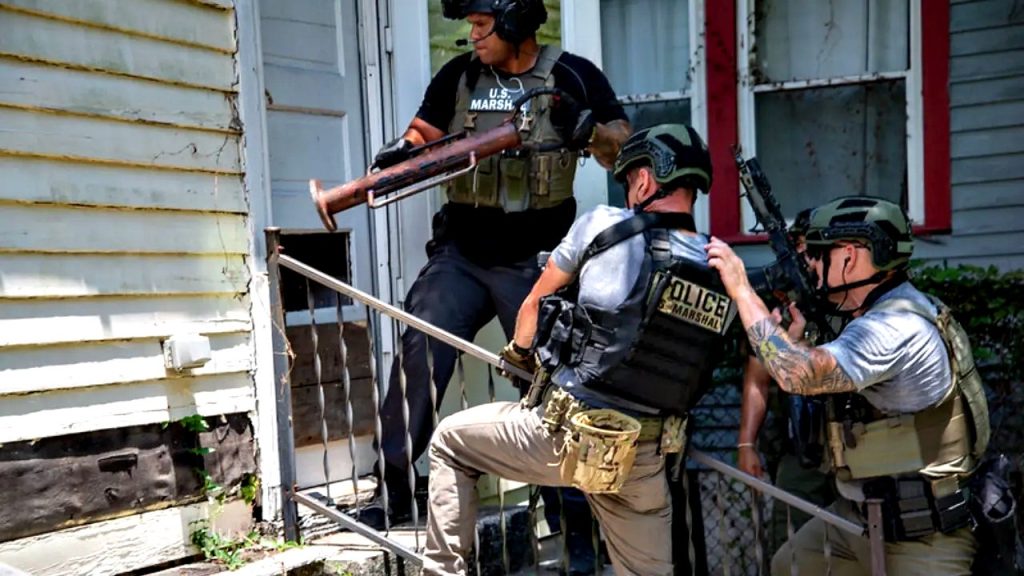Operation Lightning Bug: A Coordinated Effort to Rescue Missing and Trafficked Children in Texas
In a powerful demonstration of cross-agency cooperation, federal and local authorities successfully rescued more than 30 missing children and dismantled multiple trafficking operations across Texas. The initiative, named “Operation Lightning Bug,” brought together teams from the U.S. Marshals Service offices in San Antonio, Del Rio, Midland, and Pecos, alongside various specialized units from the San Antonio Police Department. Working methodically through Texas and national crime databases, these teams identified at-risk juveniles and coordinated comprehensive recovery efforts. Their combined work yielded significant results: three arrests for harboring runaways, nine executed felony warrants, six rescued sex trafficking survivors who were connected with support services, five new trafficking investigations, over 30 located missing juveniles, and more than 120 additional juveniles who voluntarily returned home, allowing their names to be cleared from missing persons databases. Each recovered child underwent careful interviews with the Special Victims Unit to assess whether they had experienced victimization, with survivors being directed to support services provided by agencies like Health and Human Services to ensure they received appropriate long-term care and protection.
The operation represents a vital recommitment to protecting society’s most vulnerable members. U.S. Marshal Susan Pamerleau highlighted this mission, stating, “The safety of our children is the safety of our communities, and justice demands that we protect those who cannot protect themselves.” San Antonio Police Chief William McManus reinforced this sentiment, emphasizing that “every suspect arrested, juvenile returned home and survivor taken out of harm’s way matters.” This coordinated effort was made possible by the Justice for Victims of Trafficking Act of 2015, which expanded the U.S. Marshals Service’s authority to recover missing or endangered children even in cases where no fugitive is directly involved. This legislation also established the USMS Missing Child Unit, which now leads similar recovery initiatives nationwide, demonstrating a sustained national commitment to addressing the crisis of missing and exploited children.
Human trafficking represents a persistent challenge that extends far beyond the visible operations like “Lightning Bug.” Kirsta Leeberg-Melton, founder and CEO of the Institute to Combat Trafficking, describes it as an issue that “the city of San Antonio and the state of Texas and the nation have been grappling with for a considerable period of time.” Trafficking operations typically target vulnerability and instability—children lacking consistent housing, food, or family support become particularly susceptible. Traffickers exploit these fundamental needs by initially offering necessities, then leveraging created debts to force victims into sexual exploitation or labor. “They are easy pickings for traffickers to take advantage of,” Leeberg-Melton explains, highlighting how predators systematically transform temporary relief into long-term exploitation through manipulative practices that leave victims with few perceived options for escape.
The public’s perception of trafficking often falls short of understanding its true scope and evolution. “Trafficking is the exploitation of men, women and children for forced sex or forced labor by a third party for their profit or gain. That’s been around forever,” notes Leeberg-Melton. “What hasn’t really been around is people’s understanding of that crime and their knowledge that it’s happening everywhere!” The digital transformation has drastically changed how trafficking operates—no longer confined to physical locations, traffickers have become “early adopters and adapters of technology,” using internet platforms to connect with potential victims and customers far beyond local boundaries. This technological dimension has made trafficking more pervasive and harder to detect, as exploitation can begin with seemingly innocent online interactions before escalating into physical control and abuse.
One particularly persistent misconception is that human trafficking primarily affects immigrants or occurs mainly in border regions. Leeberg-Melton strongly challenges this notion, emphasizing that “American citizens can traffic American citizens on American soil” and pointing out that most trafficking cases prosecuted in the United States involve American perpetrators exploiting American victims. “The biggest myth is that it happens somewhere else, and it happens to someone else,” she says, highlighting how this misunderstanding allows communities to remain complacent about warning signs that might be present in their own neighborhoods. She argues that meaningful progress against trafficking requires a fundamental shift in how society values all people: “Until we start recognizing that people have value, no matter who they are, where they come from, what they’ve done or what’s been done to them, we will continue to excuse some level of exploitation.”
The evolving landscape of exploitation now includes emerging threats like “sextortion,” which Leeberg-Melton describes as a growing form of trafficking. This practice involves coercing individuals into producing sexual content or engaging in sexual acts by threatening to release previously obtained compromising materials. “When you have someone that you are holding something over their head and then you are asking them for additional photographs or additional sexual conduct with the threat…that is a form, frankly, of human trafficking,” she explains. Operations like “Lightning Bug” represent critical interventions, but addressing the broader issue requires ongoing vigilance, education, and commitment from communities nationwide. For those who suspect someone may be a victim of trafficking, resources exist to help—the National Human Trafficking Hotline (1-888-373-7888) provides a lifeline for reporting concerns, with anonymous reporting also available through humantraffickinghotline.org. These channels represent crucial connections between public awareness and professional intervention, potentially offering victims a path toward safety and recovery.











